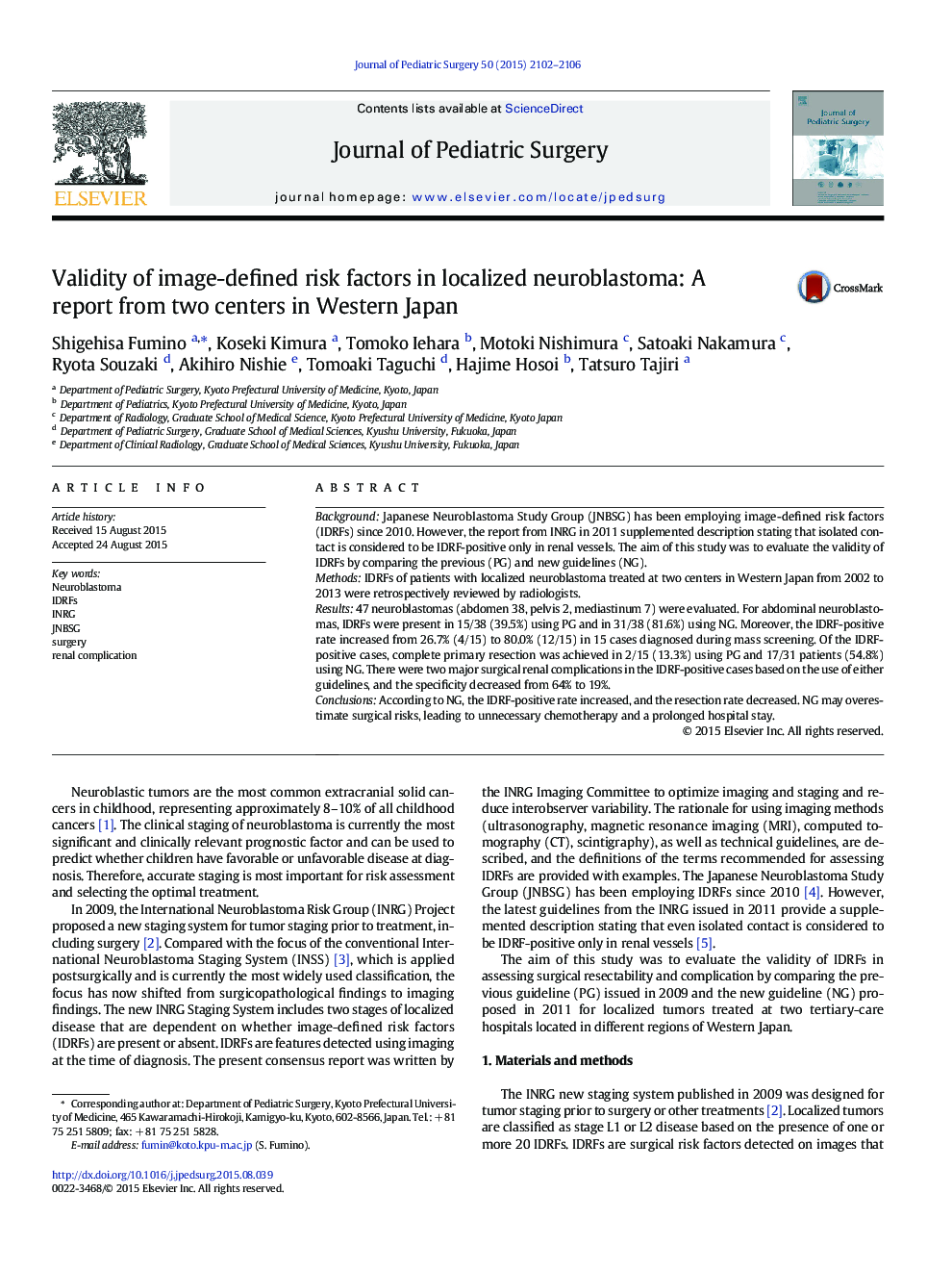| Article ID | Journal | Published Year | Pages | File Type |
|---|---|---|---|---|
| 6216742 | Journal of Pediatric Surgery | 2015 | 5 Pages |
BackgroundJapanese Neuroblastoma Study Group (JNBSG) has been employing image-defined risk factors (IDRFs) since 2010. However, the report from INRG in 2011 supplemented description stating that isolated contact is considered to be IDRF-positive only in renal vessels. The aim of this study was to evaluate the validity of IDRFs by comparing the previous (PG) and new guidelines (NG).MethodsIDRFs of patients with localized neuroblastoma treated at two centers in Western Japan from 2002 to 2013 were retrospectively reviewed by radiologists.Results47 neuroblastomas (abdomen 38, pelvis 2, mediastinum 7) were evaluated. For abdominal neuroblastomas, IDRFs were present in 15/38 (39.5%) using PG and in 31/38 (81.6%) using NG. Moreover, the IDRF-positive rate increased from 26.7% (4/15) to 80.0% (12/15) in 15 cases diagnosed during mass screening. Of the IDRF-positive cases, complete primary resection was achieved in 2/15 (13.3%) using PG and 17/31 patients (54.8%) using NG. There were two major surgical renal complications in the IDRF-positive cases based on the use of either guidelines, and the specificity decreased from 64% to 19%.ConclusionsAccording to NG, the IDRF-positive rate increased, and the resection rate decreased. NG may overestimate surgical risks, leading to unnecessary chemotherapy and a prolonged hospital stay.
